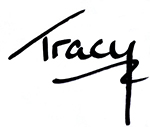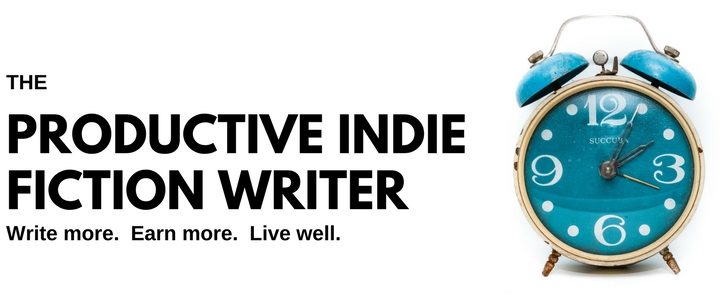One Key To Keeping Your
Genre Fiction Plots Tight
and
Your Reader Flipping Pages
Hack through Every Plotting Structure, including The Hero’s Journey

You can go crazy trying to find and use the ideal plotting structure.
Three act structure. Four act structure. Save the Cat. Story Physics. Story Grid. Even the venerable Hero’s Journey. Every guru says theirs is best. And it is…for them.
I bashed my head against this brick wall for years because I thought the experts knew better. Yet I could never fully adopt one of their systems. Then I accepted that my method worked just as well, if not better…for me.
Every plotting structure has an inherent weakness that writers run into with a loud smack, usually the first time they try using the new structure.
Classic plotting weaknesses — an example.
You need a mid-point. And a turning point at the end of the first and second acts. A pinch-point between the mid-point and the second act turning point.
You figure out what those mid-points, turning points and pinch-points should be and add them to your outline.
Only…what comes between?
That’s the weakness. You know where all the points come in terms of pages or scenes or word count. Now you must invent scenes to fill the blanks. Sometimes previous plot developments dictate what comes next. But what if those scenes don’t fill the requisite number of pages?
This is why middles sag. The author dreams up filler to make up the page count for a properly constructed plot.
If this is how you struggle to plot, try a different way. Try building your plots using story beats.
One way, not THE way.
This is purely another way to tackling plotting. It may not work for you, just as all the formal story structures I’ve tried don’t suit me.
Plotting by story beats:
- Is highly intuitive — you’re simply putting down the story as you think it should happen.
- Avoids saggy anythings — there’s no empty pages you have to fill.
- Tightens up your plot — so the pacing is as fast or slow as you want it to be.
- Delivers unique storylines — because you’re building them natively, not twisting a story to fit a pre-supplied structure.
Story Beats Defined
There are many formal definitions of beats. Even the MasterClass program will teach you how to create a beat sheet in 12 steps. Shaunta Grimes on Medium has an entire article focused upon story beats.
Generally I find these definitions and explanations get in the way. I’m constantly wondering if I’m making “real” beats, which inhibits the plotting process.
The loose definition I use is that a story beat is something that happens that impacts the story going forward.
That’s it.
A beat could be, for example: “He shoots his brother”.
Character arcs can also be broken up into beats: “He realizes he can’t live without her.”
Often character beats can be inserted into already in-place scenes, which tightens your story even more.
Or sometimes you might want to slow down the pace and give a character beat its own scene.
Story beats can be whole scenes by themselves, or you might want to combine minor beats with a more significant plot point, to keep the story ticking along.
The combining and separating of beats into scenes is a skill you’ll acquire with practice.
The genre you’re writing will inform your beat-juggling, too. If you’re writing a taut, high-stakes political thriller, the character beat, “He realizes he can’t live without her” would be tucked into an action scene. Possibly a quieter and slower one, but it wouldn’t get a scene of its own. A romance novel, on the other hand, would showcase this character beat with the full scene treatment.
How to Plot by Story Beat — three steps.
Step One — Write out what you already know about the plot
You usually have some idea of what action the story will include. Write it down in the order you think the events will happen.
Keep one paragraph per beat. You can add as much detail as you need to properly capture the beat, but keep it to the one paragraph.
At the very least, write down your starting point and end point (which may yet change).
Step Two — Write the major characters’ arcs
At this point, you keep the character arcs separate. It’s artificial, but it simplifies plotting immensely.
Write down in beats where the character starts out, where they end up, and how they reach that point of development or realization. Each step on that journey from beginning to final realization and change is a beat.
Create as many beats as you need to support the character’s change. Secondary characters won’t get nearly as many beats for their change, and minor characters might only deserve one or two beats, if any (your book length and genre will determine that).
Make sure the character arc is completely developed and logical. Each beat leads to the next beat, until the character arrives at the end of their emotional journey and accepts (or refuses, in the case of noir) the change facing them.
Step Three — Fill in the missing beats
Start with the first and second story beats. What must happen to get your protagonist from the first beat to the second? Write each step as a beat. Don’t settle for your first idea, or even your second. Keep pushing for a better answer until a unique story beat occurs to you.
Move on to your second and third beats. Is beat three a natural outcome of beat two? What has to happen in between to get the characters to beat three? Plot out the beats that must happen in between.
Don’t force yourself to linear plotting, either
You may find yourself jumping from the end of the story to the beginning and back, then to the middle. No problems. Just leave extra line spaces between your paragraphs when story beats are still needed to get the characters through the story.
You can also break off and start adding character beats to story beats that exist (actually drop them right into the paragraph for that beat — I add them as an indented point, so I don’t miss them while I’m finishing the plot or writing the story). Or you can add character beats to white spaces in the growing outline where you think the beat should happen and wait for an appropriate scene to populate near it.
Or you could decide the character beat is a scene of its own and give it a whole paragraph.
Start combining beats into scenes
As you develop your beats, you should also be mentally grouping beats into possible scenes. You’ll find that it happens almost organically, that character beats inform what a scene should look like, or fit in perfectly with the story beat’s action.
When you figure out a scene, group all the beats together into consecutive paragraphs, with no spacing between, to create your scene.
You might have to hammer a scene to fit in the beats you want. Even then, when you come to write the scene, some of the beats might refuse to be included. You can drop them into the next scene or write a quick sequel-scene to include them. This system is very flexible.
Once you’ve made all your beats and they’re in a scene, or given a scene of their own, your plot is done.
You’ll have echoed the classic three or four act structure.
We’re story-consuming animals, who’ve absorbed them throughout our lives. The instinct for good story is calcified into our bones. You will often find that the outline you build by story beats falls neatly into a classic act structure, with an opening act, a turning point, a black moment for your protagonist, etc.
If you can’t spot that structure in your outline, don’t worry about it. Plotting by beats ensures your story fits together properly, with no plot or character holes, no saggy bits, a tightly driven plot and all the elements that make your story a satisfying read for your reader.
Which is the only litmus test that should count.

Write More, Faster Than Ever Before | Are You Prolific?
Editing Your Next Novel? Mark Posey offers fast, writer-friendly edits with zero drama. Check out services »
